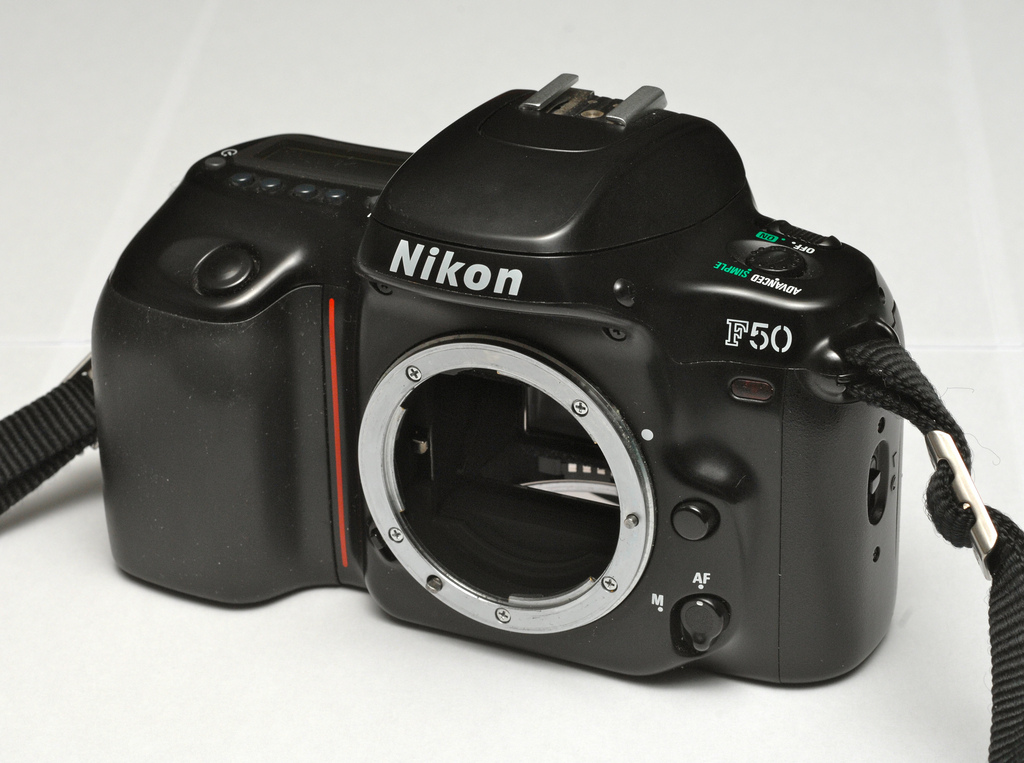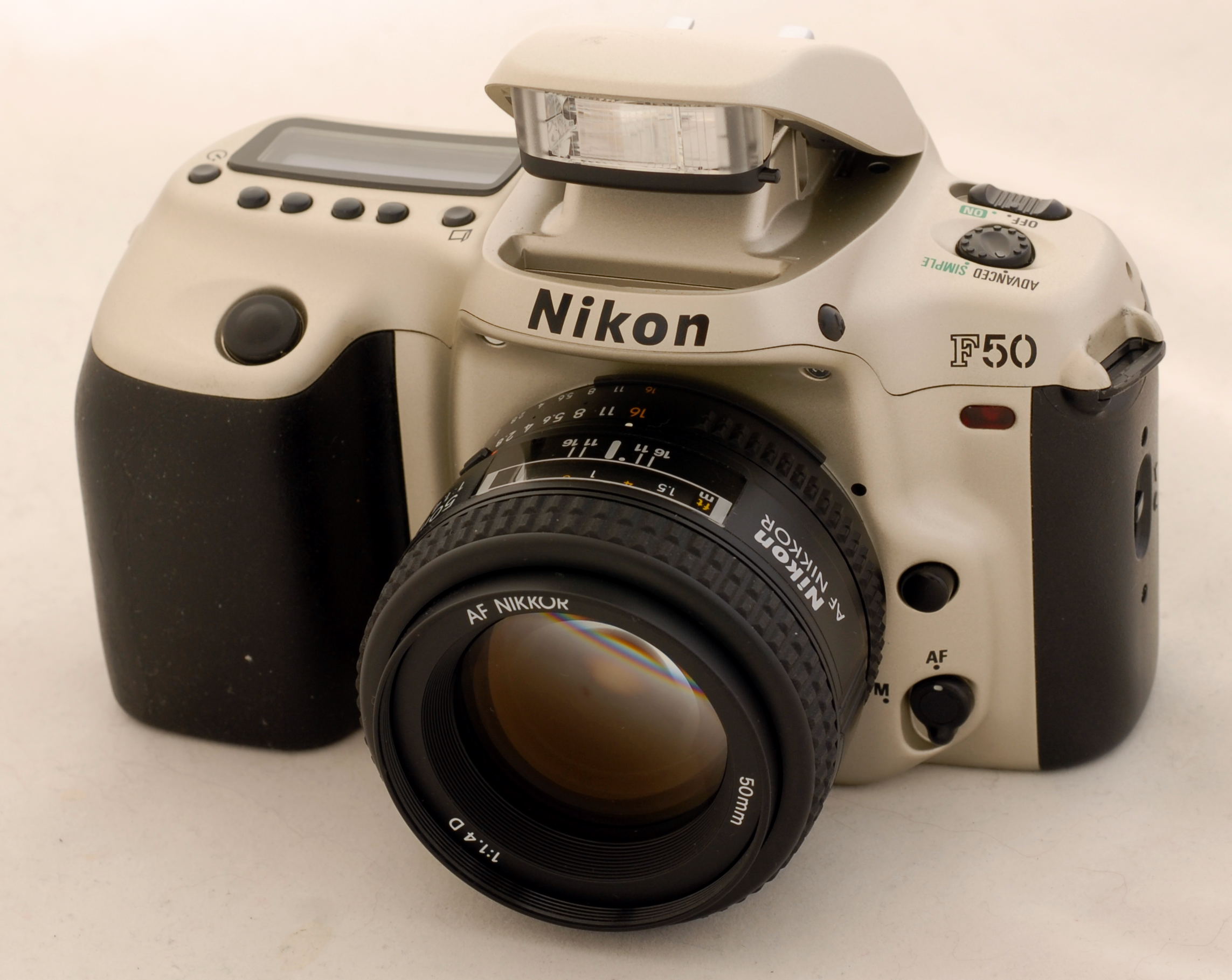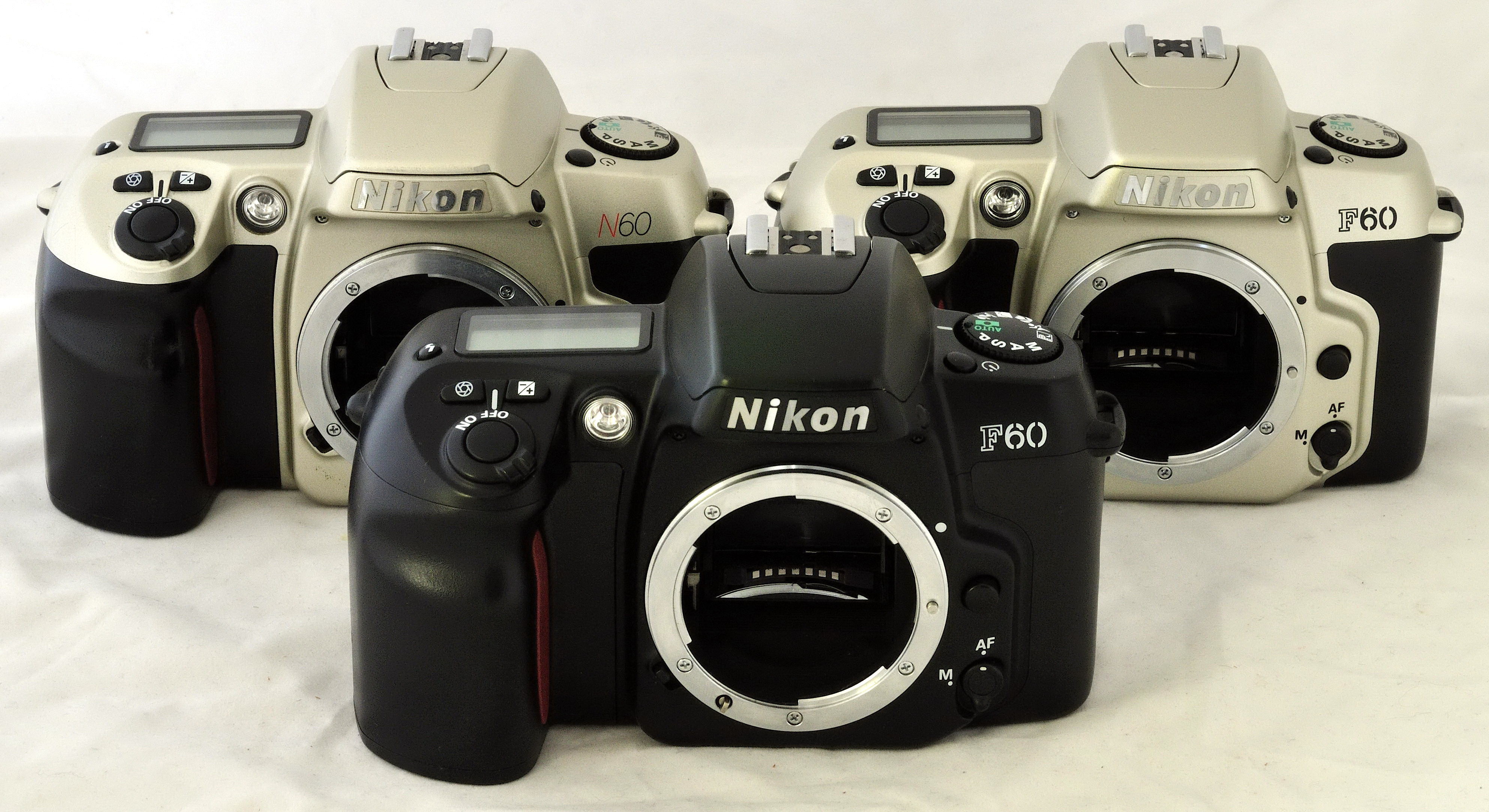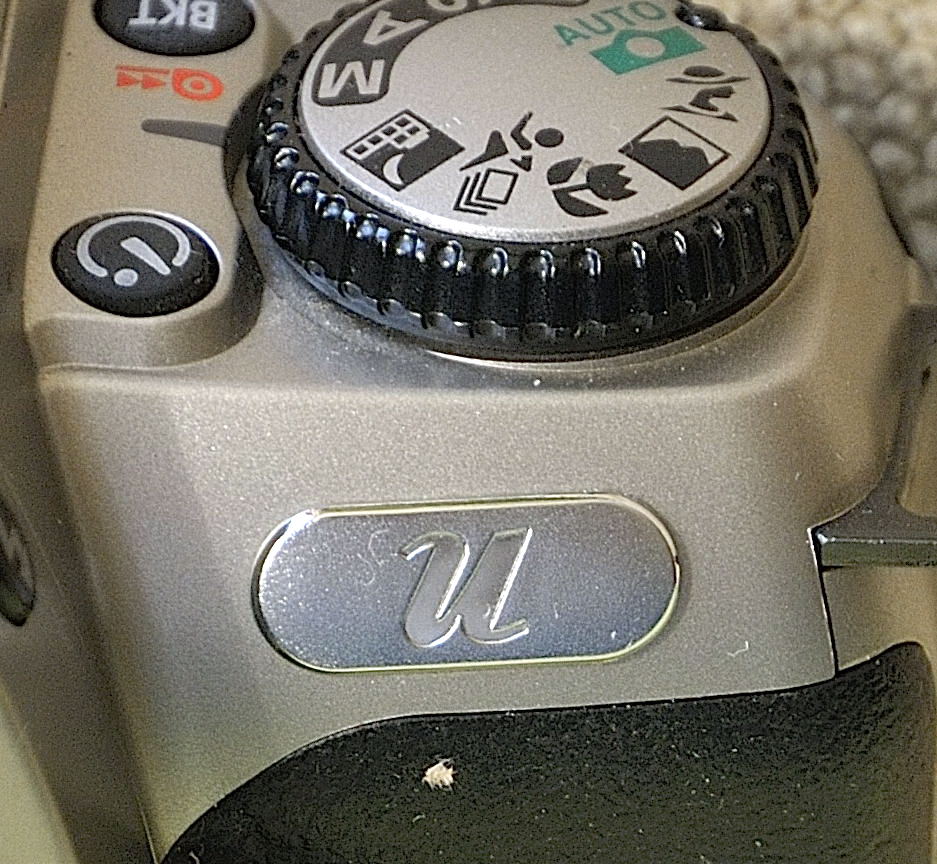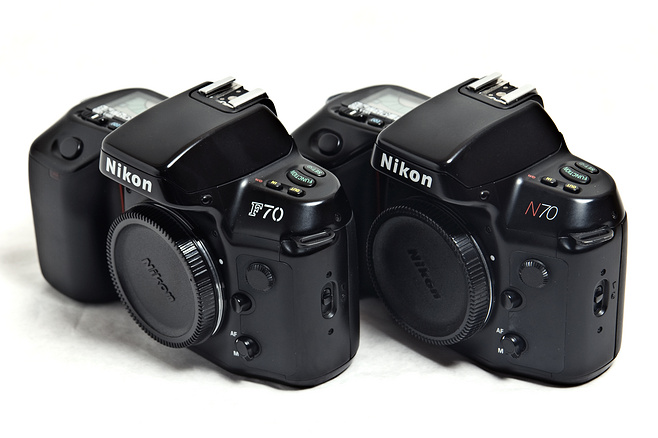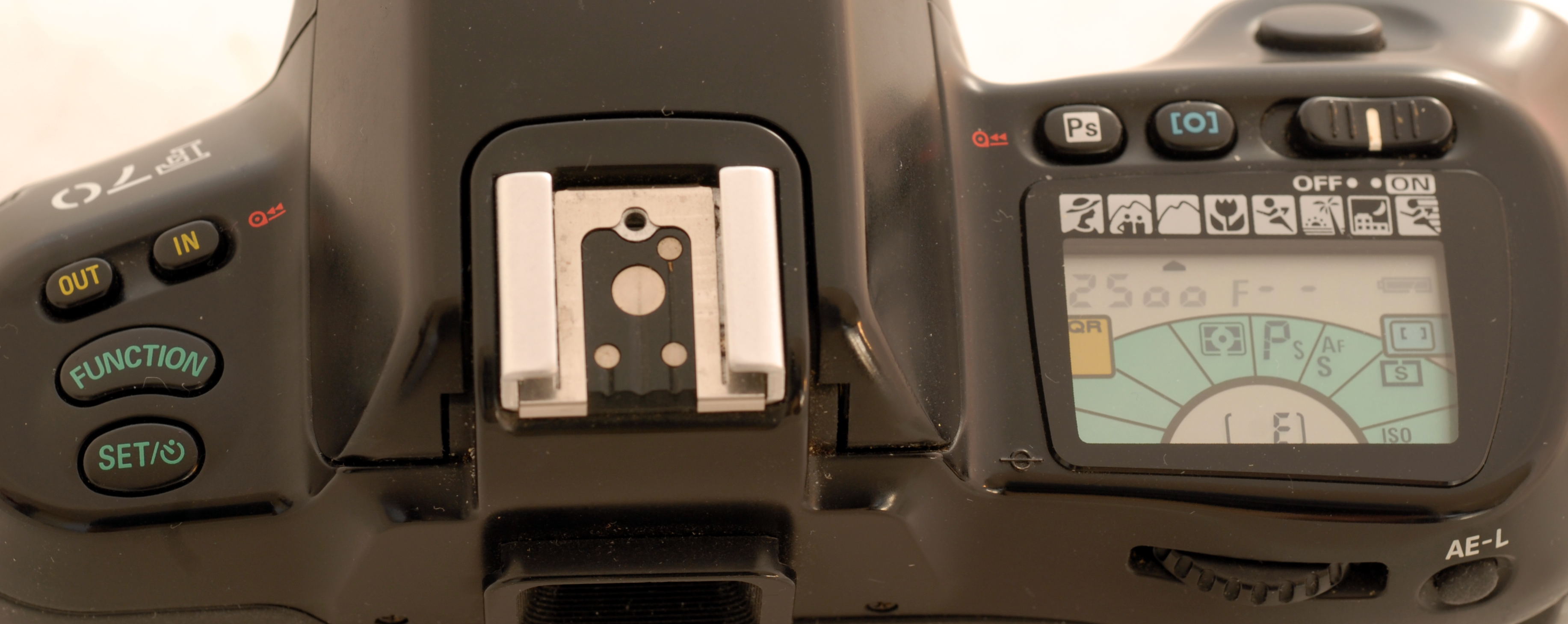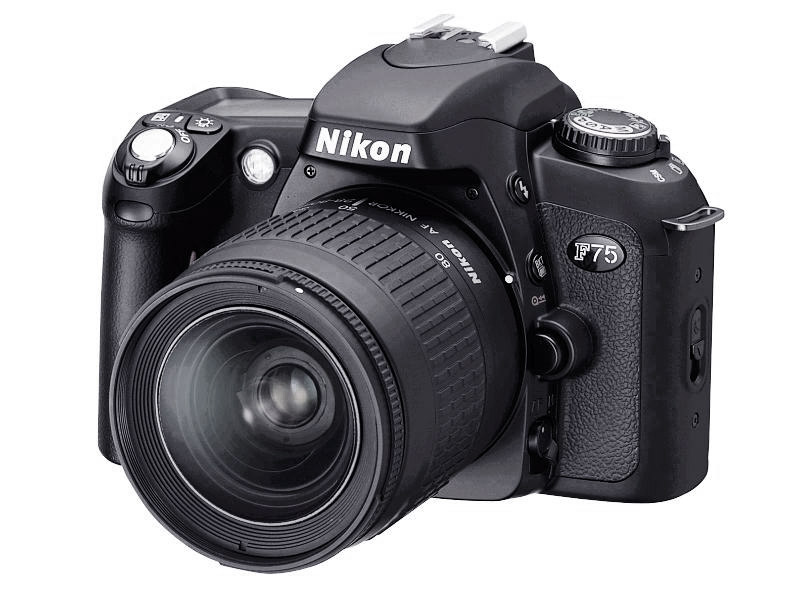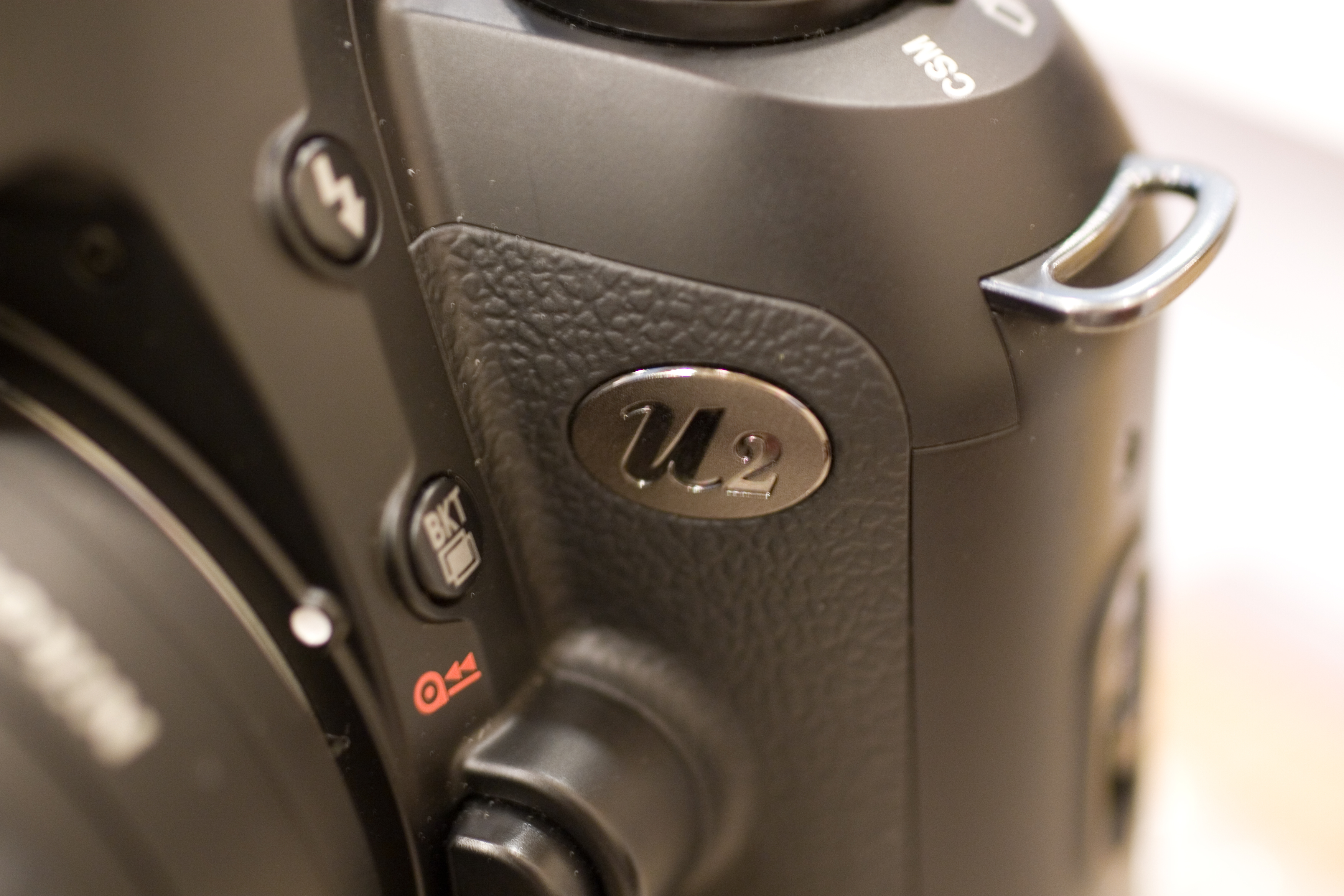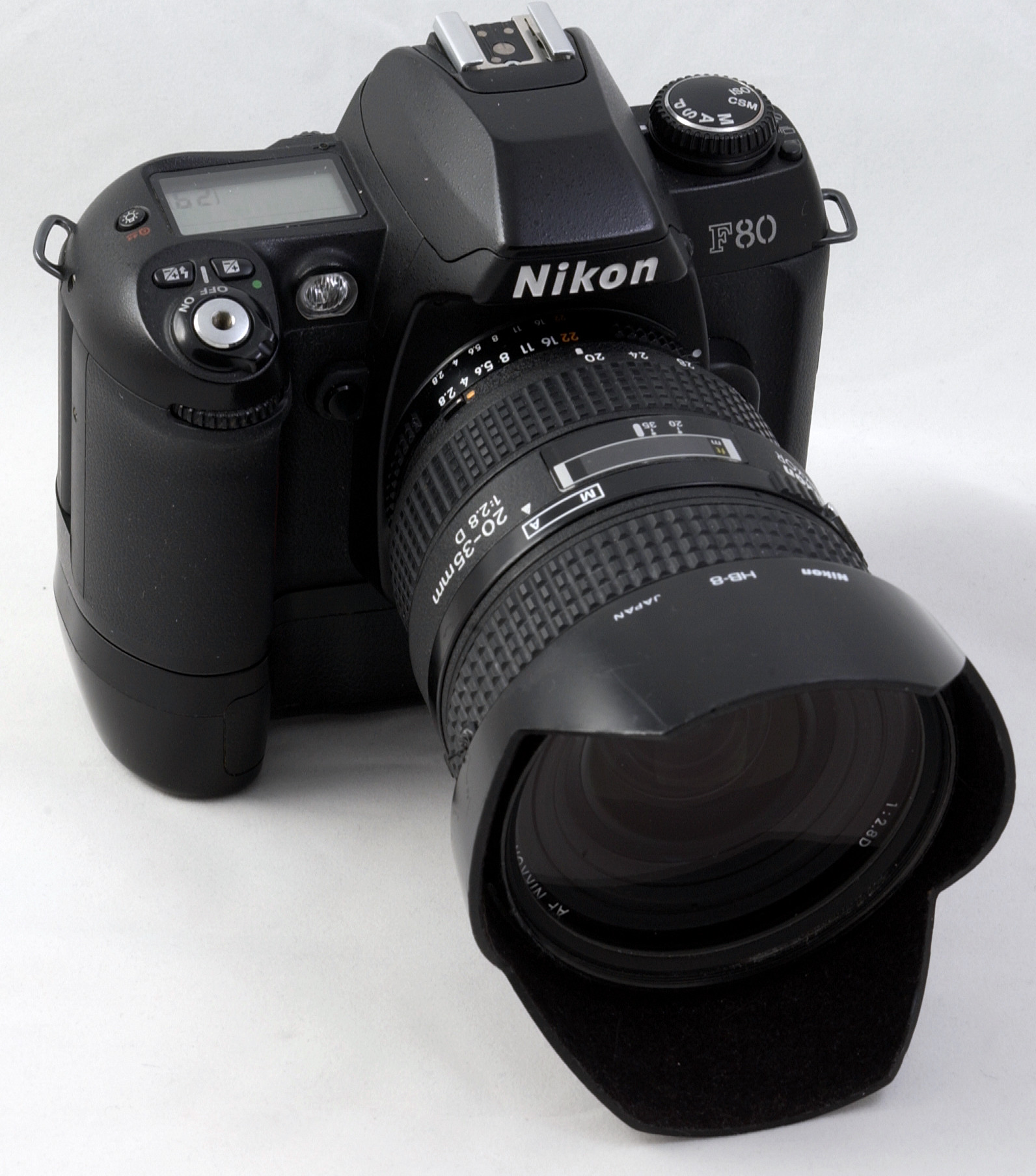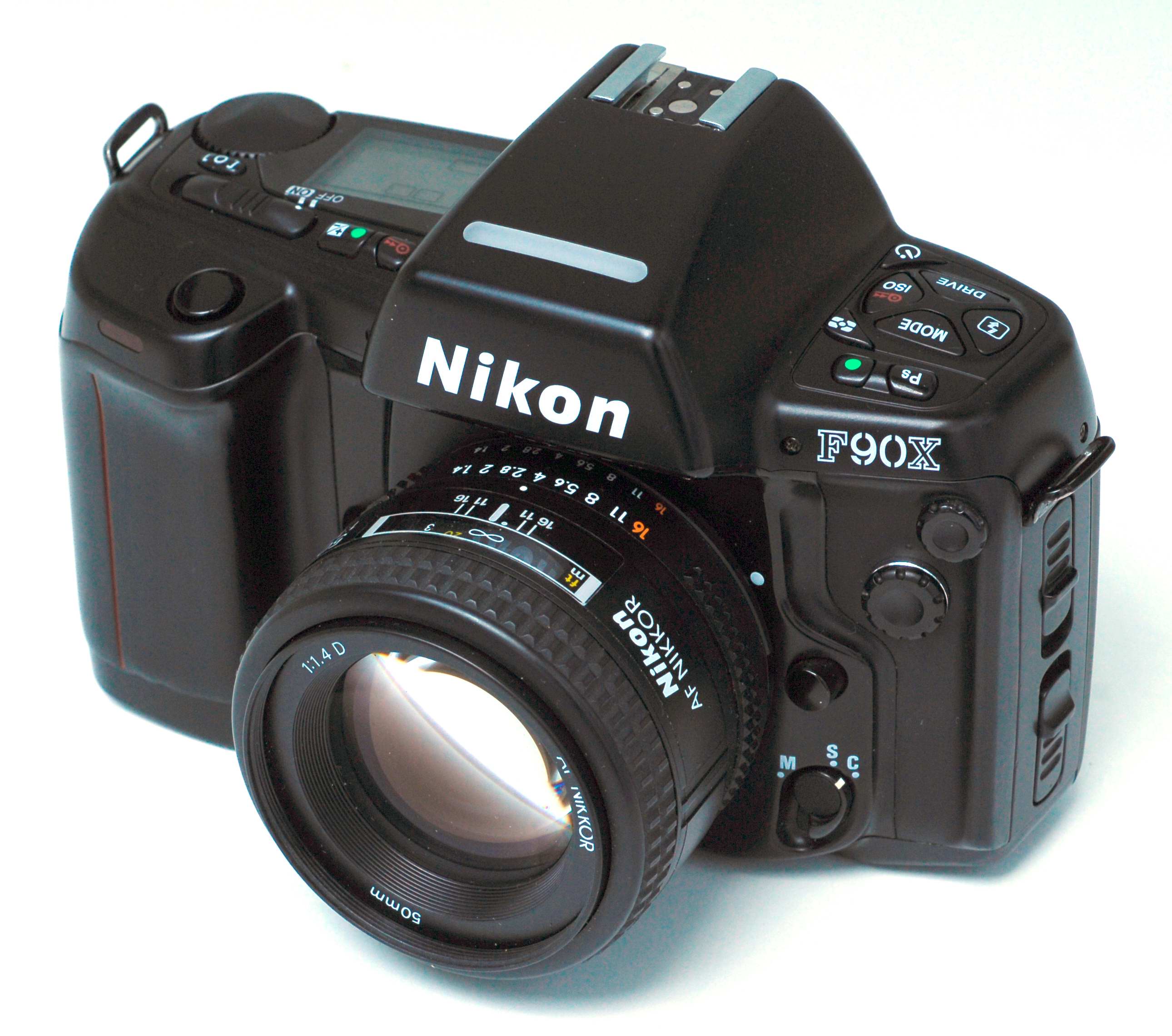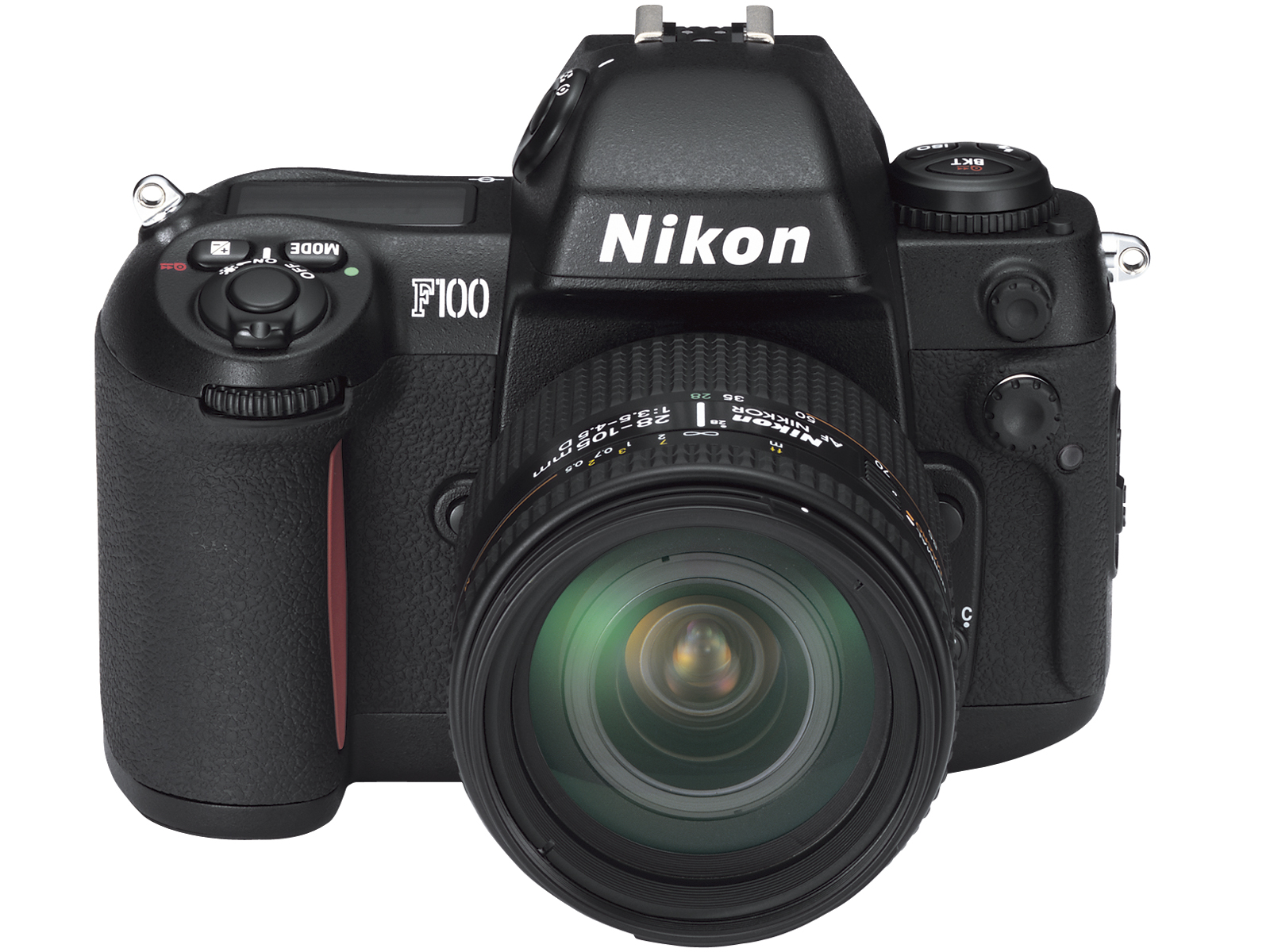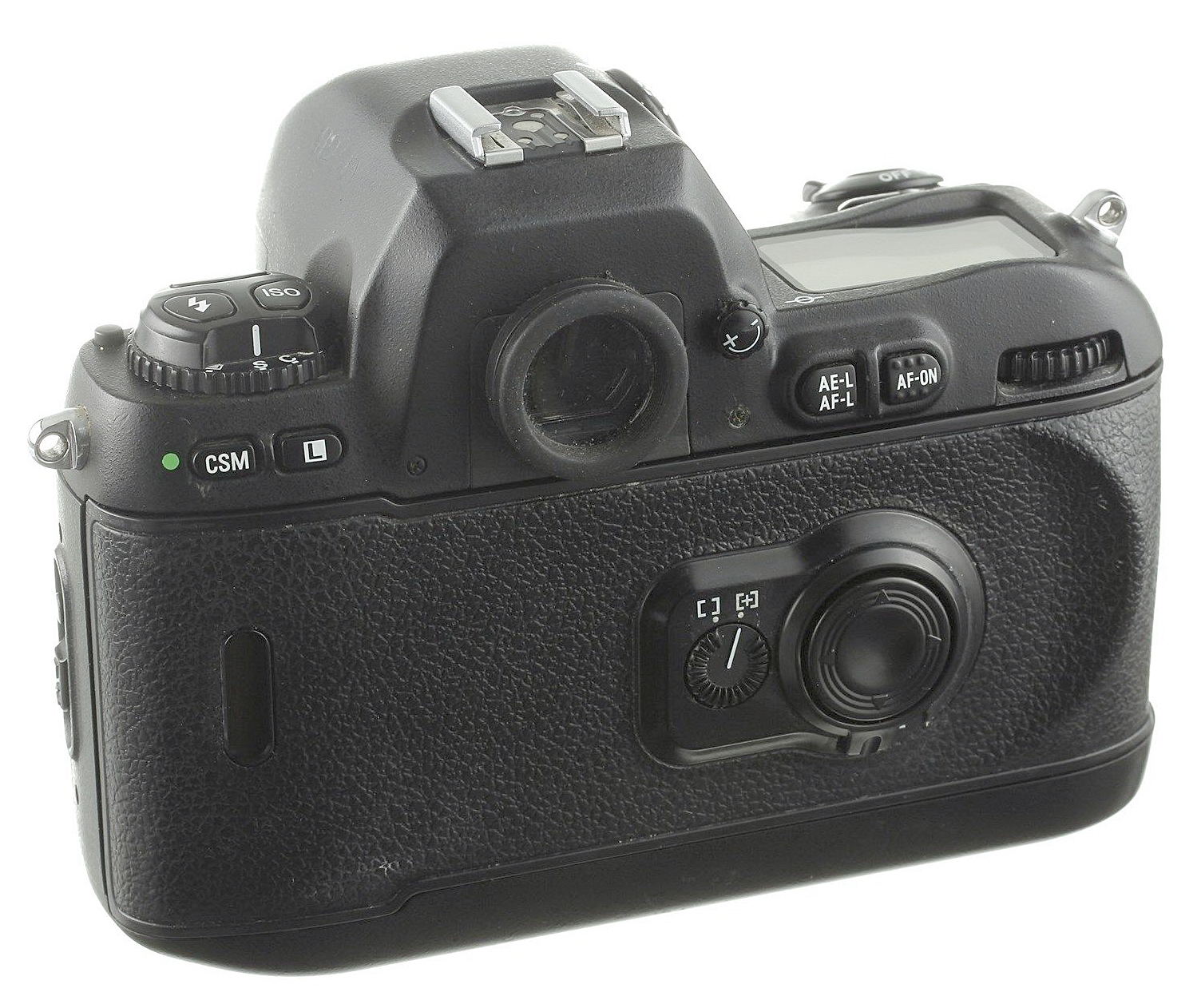Nikon F-50 - F-100 series
Starting in 1992 Nikon introduced a new series of 9 single lens reflex cameras for amateur and semi-professional photography. All of them have a built-in motor drive, various exposure and flash programs, auto focus and a built-in flash (except Nikon F-90 and F-100). Most of them could be ordered with or without a data back, a battery pack and in black or white/chrome finish.
All over the world these camera carry the codes/names: F-50, F-55, F-60, F-65, F-70, F-75, F-80, F-90 and F-100, although models sold in the USA have an ´N´ in stead of the ´F`. To complicate identification some cameras, sold on the Japanese market, received a different name (see below). Most interesting features are brought together in a matrix, which you may find here. Below reviews in number order, which doesn't mean that the cameras were introduced in that order.
Nikon F-50
The Nikon F-50 was introduced in April 1994 and was produced until 1998.
It has two main groups of programs: simple and advanced. The 'simple' program is fool-proof. As soon as a film has been loaded one can shoot in whatever conditions. In 'advanced' program the photographer can choose out of the regular P, S, A and M programs. The F-50 QD has a fixed data back. The camera has no penta-prism viewfinder but a view finder based on mirrors. The camera was a great success, documented by a sales record of over 1 million cameras!
A white Nikon F-50 was available too!
Nikon F-55This camera was introduced in March 2002. A simple SLR with regular programs plus a vari-program (portrait, landscape, close-up, sport and night). It is advisable to use the AF-D lenses only, as older lenses may exclude various exposure and flash programs. G-mount lenses don't work on this camera with a plastic mount!! Neither do VR-lenses. Typical for this camera is that film loading is automatically in the sense that the film will advanced totally and after each frame the film is rewind into the film cassette. There is a Nikon F-55D with a data back; in Japan it is called Nikon Us. A free beer for those that can explain why! Nikon F-60
The Nikon F-60 was build from August 1998 (officially introduced at the 1998 Photokina in Germany, but in Japan available in June that year) till early 2001. Available in black and silver. Nearly identical features as the Nikon F-55. When used in manual mode the exposure meter, which normally uses 6 metering areas, will automatically change to center-priority metering. There is also a Nikon F-60D with data back. The Nikon F-60 is the basis of the Fuji's popular Fuji S1 Pro digital SLR, introduced in 2001.
Nikon F-65
The Nikon F-65 was build from early 2001 until late 2003. It is the successor of the Nikon F-60 with an improved auto focus module. One of the rare cheaper Nikon SLR's with DOF-feature and bracketing. For more details see the matrix.
In Japan the data back version (Nikon F-65D) of this camera was sold as Nikon U.
Nikon F-70
This rather funny camera was introduced in November 1994 and was in production until 2000. It has more and better features as the cameras above. The shutter is faster (up to 1/4000 sec.), the motor drive is faster (3.7 fps.), the auto focus is faster because of the new CAM 274 auto focus module.
The funny feature (not welcomed by many photographers however) on this camera is the rather crowded screen on its right top. Nearly all program details are shown. A German photo-magazine once called it the 'monkey cinema' (Affenkino). On later models of Nikon SLR's most symbols were/are grouped in, and can be selected via a LED-screen or via a selector wheel. A damper on the party are the expensive lithium batteries that are empty before you expect it. The data back version was sold as Nikon F-70D.
Nikon F-75
This camera, a trimmed down version of the F-80, was introduced in March 2003. New is the auto focus: it has a 25 sector matrix metering. Also this camera has no penta-prism but just a mirror based view finder. The data back version has a fixed data back and was sold as Nikon F-75D.
In Japan the latter version was sold as Nikon U2.
Nikon F-80
Nikon F-80 + MB-16 + AF-Nikkor 2.8/20-35 mm. This camera - introduced in April 2000 - is a very interesting camera in comparison with the cameras mentioned hereto. It has a higher shutter speed (1/4000 sec.), more and better exposure and flash programs and nearly all AF lenses (including VR-lenses) can be used. New on this camera is the possibility to ad a grid (equaling the Nikon E-view finder screen) to the viewing screen. There are two versions with a data back: Nikon F-80D has a regular data back, the Nikon F-80S has a data back where data are printed in between the frames. As the data back's have an infrared beam to check film perforation, infrared films can't be used. On all models battery pack Nikon MB-16 ('eating' 4 regular AA-batteries) can be placed for better grip and more power. Fellow camera maker Fuji used this camera for its successful Finepix S2 Pro and Finepix S3 Pro digital SLR's! In addition to that Kodak based its Kodak DCS Pro 14n and Kodak DCS Pro SLR/n on the Nikon F-80! Which is a nice compliment!
Nikon F-90
This sophisticated camera - as the successor of the popular F-801-series - was introduced in September 1992 and succeeded in October 1994 by the Nikon F-90X. Both cameras have a relatively fast shutter (1/8000 sec.), various exposure and flash programs, especially when D-lenses are used. The F-90X has a faster auto focus and can be fitted with the MB-10 battery pack. Via a so called Data Link System, linked to a Sharp Electronic Organizer (model 8000, 8200 and/or 8600) the camera can be programmed. The Nikon F-90X was used by Kodak for its DCS (digital camera system) 410/420 digital SLR's. Many accessories, like the battery holder and the MB-10 power pack can be used on the F-801/S and vice versa, although the extra shutter release button on the MB-10 will not work on the F-801. The Nikon F-90D has the MF-25 data back, the Nikon F-90S has the MF-26 data back. In 2001 production of the F-90 series stopped.
Nikon F-100
The last camera, mentioned in this review, is by far the best! The Nikon F-100 was introduced in December 1998. It can be seen as a smaller version of the Nikon F5 (by some publicists called the 'baby F5'). This is a deserved compliment. It has a very nice body, various exposure and flash programs and 22 different custom settings. Many accessories can be mounted, like a battery pack (MB-15), a data back (MF-29) and an exchangeable view finder screen. This camera has the same auto focus module (CAM 1300) as the Nikon F5 and Nikon D1-series. A pity is that non-AI lenses cannot be mounted as there is no metering.
Of all modern Nikon film SLR cameras probably the most wanted/desired camera. Today a very nice and affordable back-up camera.
|
